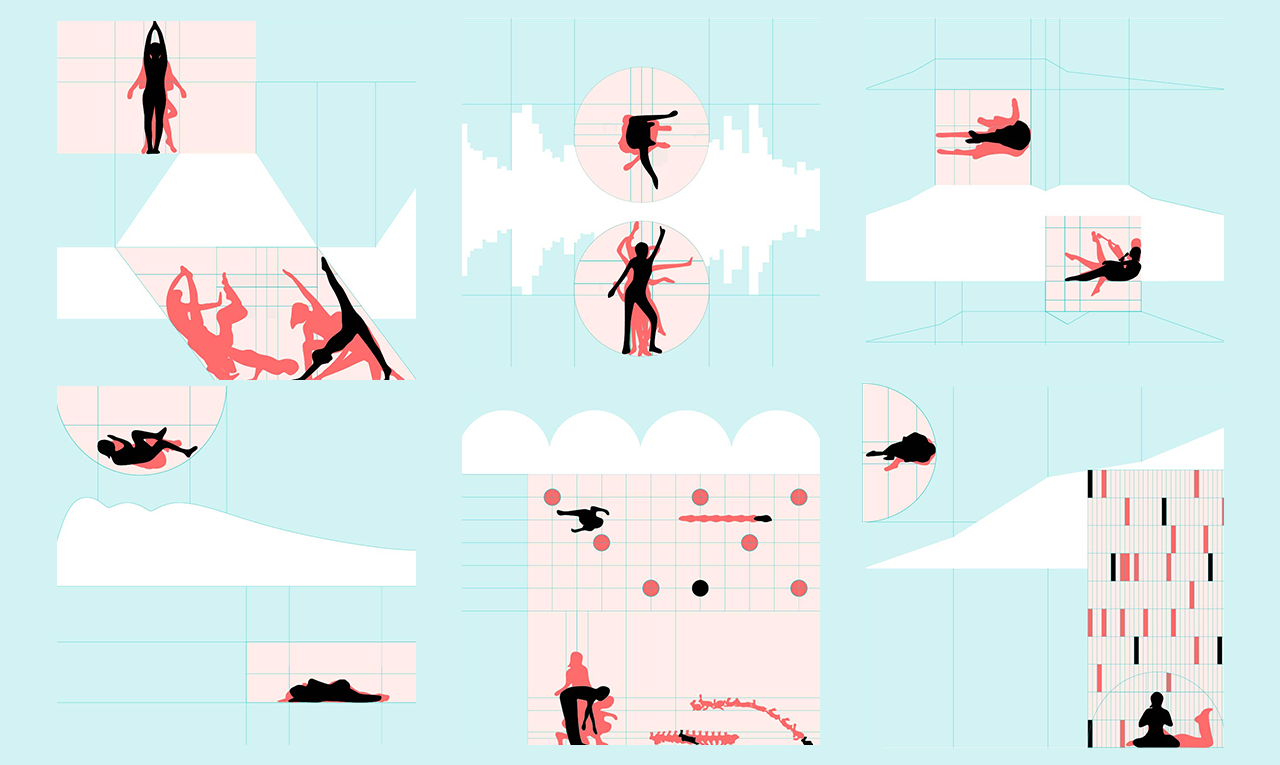The ‘conventional house’ obstructs one from having meaningful emotional experiences within it. The historical interlinking of geometry, proportions, and the human body in architecture has unfortunately morphed into standardization. Have we become hermit crabs carelessly moving from one shell to another? Why does one have an instinct to furnish domestic space? How can a house entice the senses? To answer such questions, an alternative approach to designing a house is explored: Zoey’s House. Zoey feels emotional about her house, which is designed around her daily routine and bodily proportions. Her experiences of daily living are enhanced, and she feels fulfilled.

Why does the conventional house have a standardized form, spatial organization, and materiality? How has this become the norm?

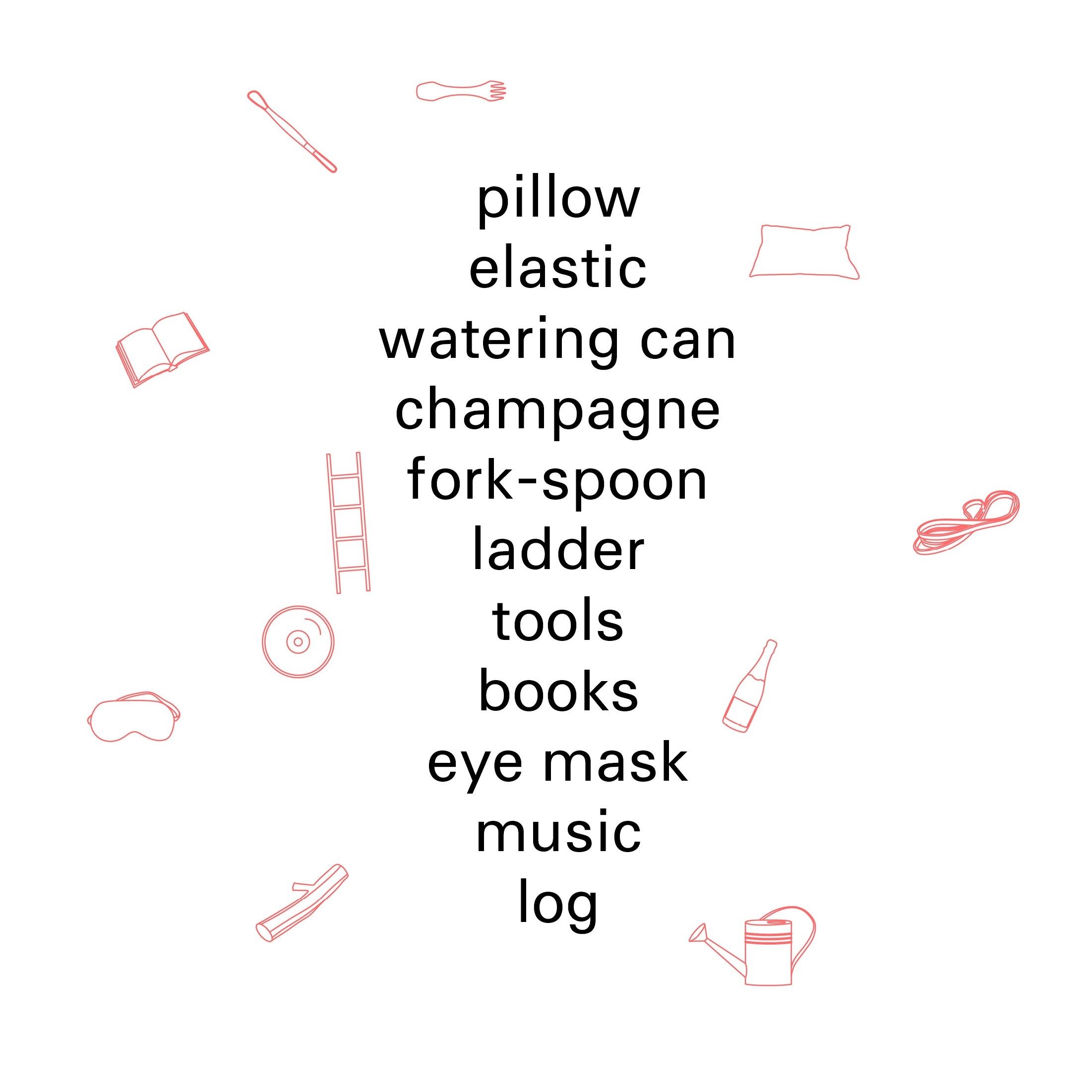
There is no furniture in Zoey's house. There are only objects that become relevant through her use.
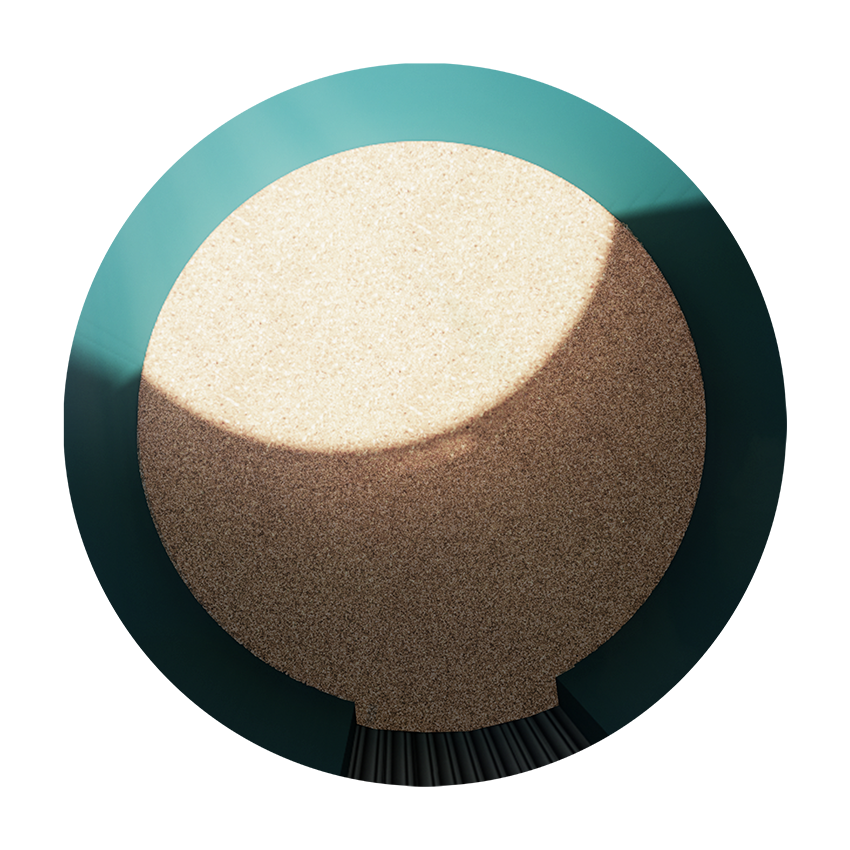
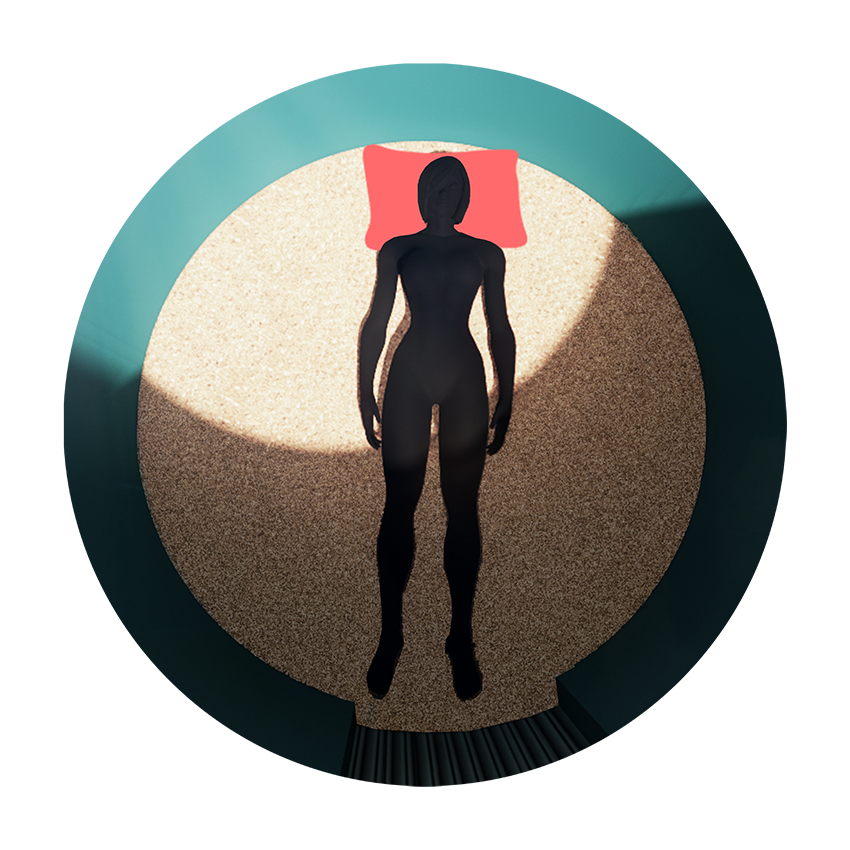
Zoey’s sleep capsule is designed as a cylinder, where the diameter is equal to her height and arm span. This allows her to feel comforted and embraced by the space, which is important to ease her mind as she rests after long and active days. The walls are painted in teal, her favorite color, which is beneficial to rest her eyes and create a darker space. In fact, the only light that penetrates this space is natural light from a window above. By morning, Zoey is awakened by the sunlight, which shines through the window above her sleep capsule. She enjoys the morning sun for several minutes before she struts to her kitchen to boil water for her tea.
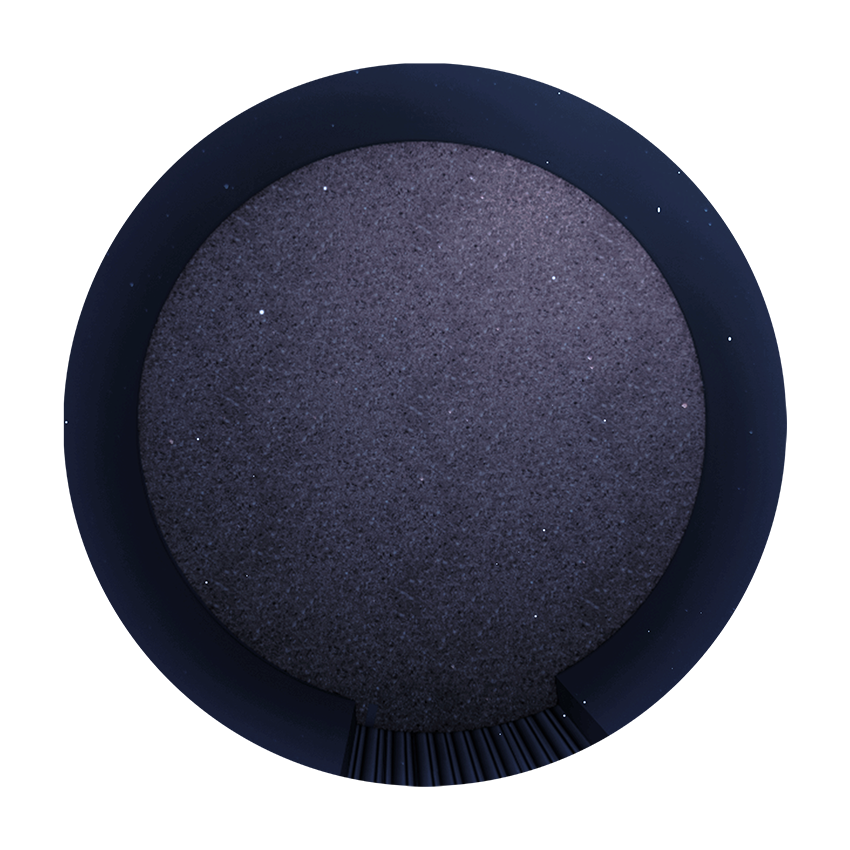

The corrugated metal door slides within the cylinder’s walls. Zoey’s body is relaxed on the cork floor and her head rests heavily on her pillow. By nighttime, Zoey gazes up towards the stars and reflects on her day. She feels fulfilled and excited to complete her sculpture the next day. She breathes heavily as the breeze rattles the windows and comforts her soul. She falls asleep and dreams of dancing at an ABBA concert.

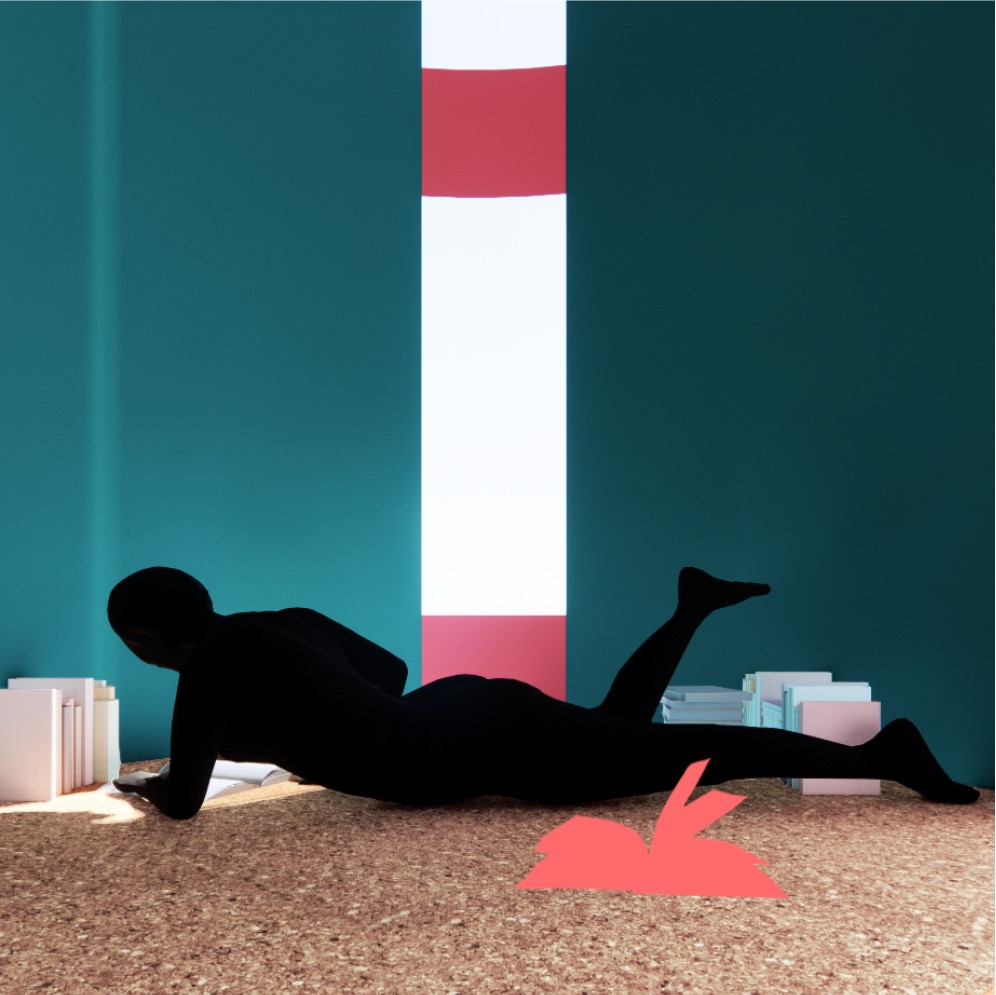
Zoey’s reading room is a half cylinder, which allows her to rest her back against the wall or sprawl in the space and read on her back or stomach. She enjoys stacking her books and magazines along the perimeter of the room. She mostly reads issues of ‘The Japan Architect’ or fiction novels. The sun shines into her reading room by 7:30 am, which allows her to read without artificial lighting. Zoey finds inspiration for her sculptures by reading magazines and the fictional novels nourish her creative mind. She sips her green tea and snacks on a clementine before gardening.

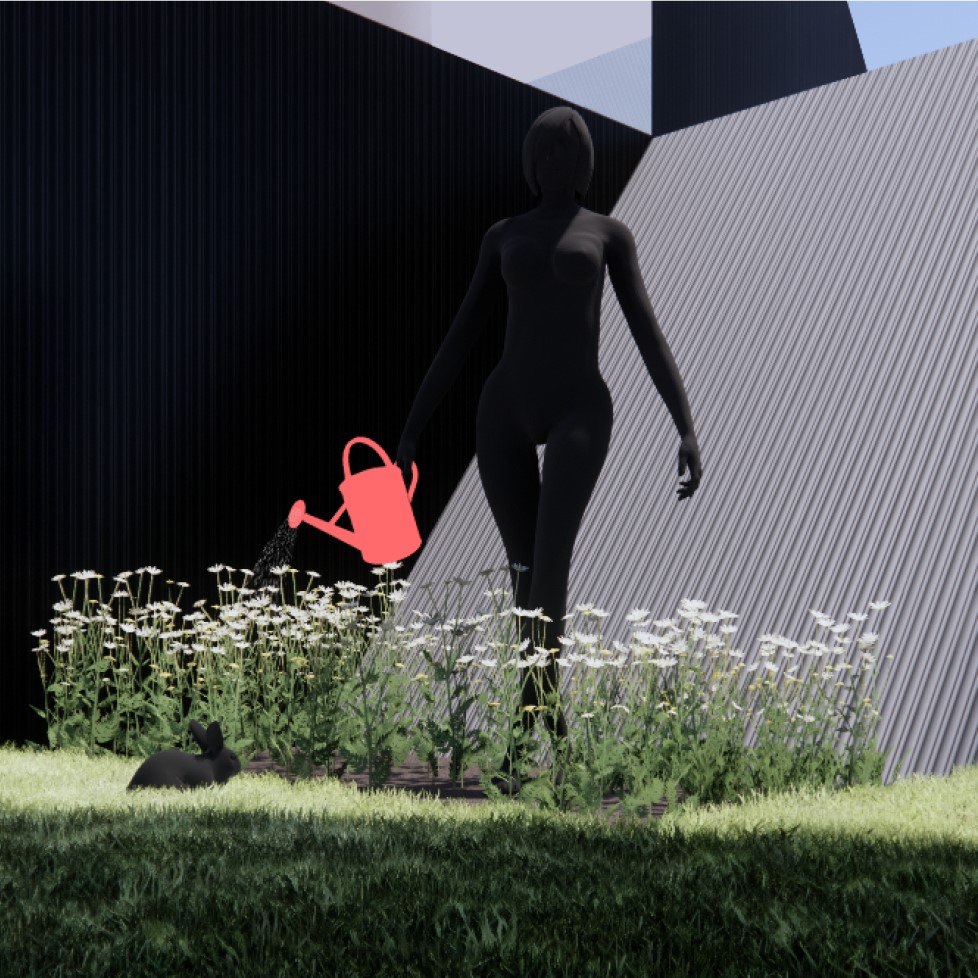
Zoey and her rabbit Peter enjoy gardening during the warm summer months. The types of flowers change every planting season, yet daisies are by far her favorite. Peter enjoys hiding between the stems and finding shade. The gardens is placed strategically to receive the required sunlight. The shiny aluminum which clads her stretching room helps reflect sunlight towards the flowers. Zoey waters her flowers every morning with her watering can while Peter eats grass and hops around the yard.

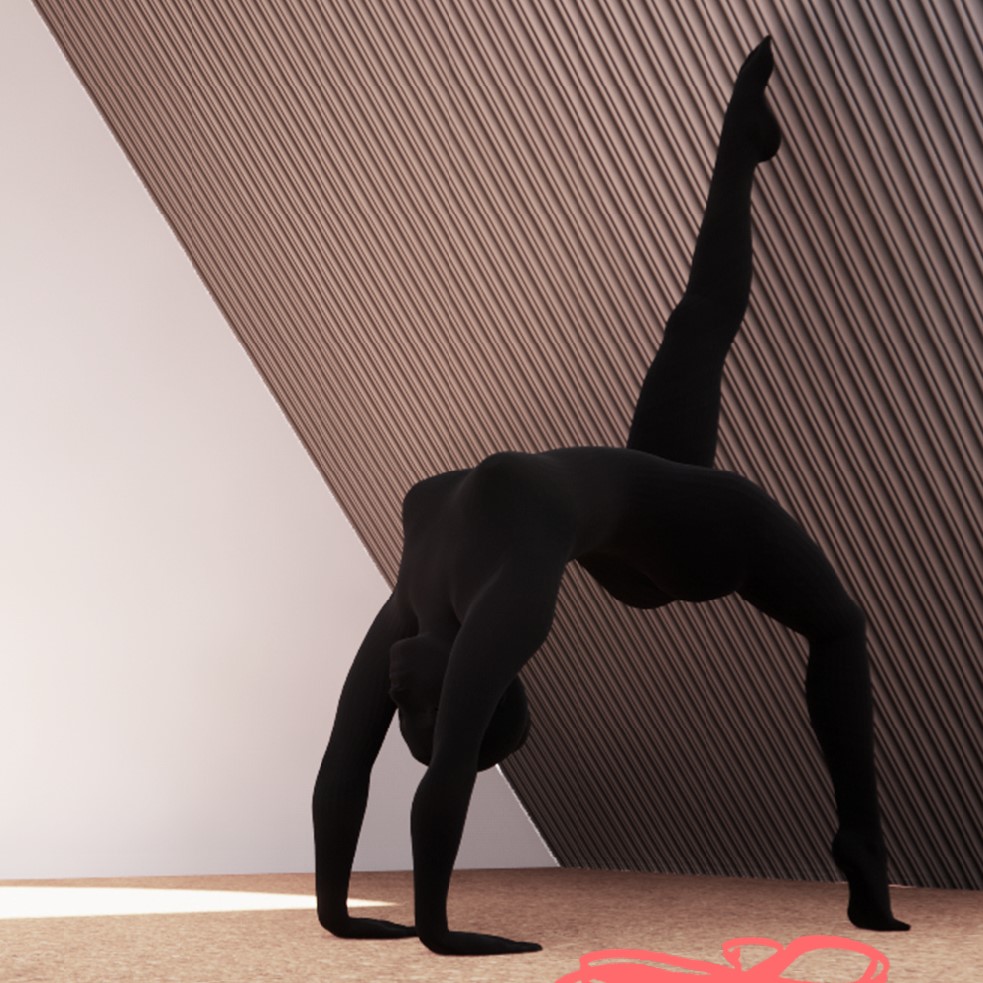
The stretching room is designed as a parallelepiped because the slanted surfaces help Zoey achieve certain yoga poses. The cork flooring absorbs her sweat and the corrugated metal allows her to grip onto the surface and deepen her stretches. The skylight illuminates the space from above. Zoey must stretch every morning because her body aches from long hours of sculpting. She uses an elastic to achieve her poses and hold them longer. She holds each position for an entire breath cycle, and this also helps slow her heart rate and improve her concentration.


Zoey’s sculpting studio is on the second level of her house. She mostly works on this mezzanine but sometimes reaches over the railing to sculpt double height pieces. The column and slanted wall are useful as an anchor points because some of her sculpting positions are difficult to hold. Zoey’s preferred sculpting medium is copper. She has designed and welded elements in her house such as the handrails and the ladder to access her discotheque. She uses recycled metal for her sculptures and celebrates patina.


When entering the house, the first space encountered is the cookery, which overlooks the main living space (social club). The staircase has been calculated to allow Zoey to walk underneath it. She always leaves a clementine or two on the counter as a snack. During lunch time, Zoey calls Peter to come eat some Kale and she pours herself a large glass of water. It is important for her to stay hydrated because her work as a sculptor involves strenuous physical efforts. She enjoys eating standing up and sometimes sits on the counter to rest her legs.


First Floor Plan (Left), Second Floor Plan (Right)
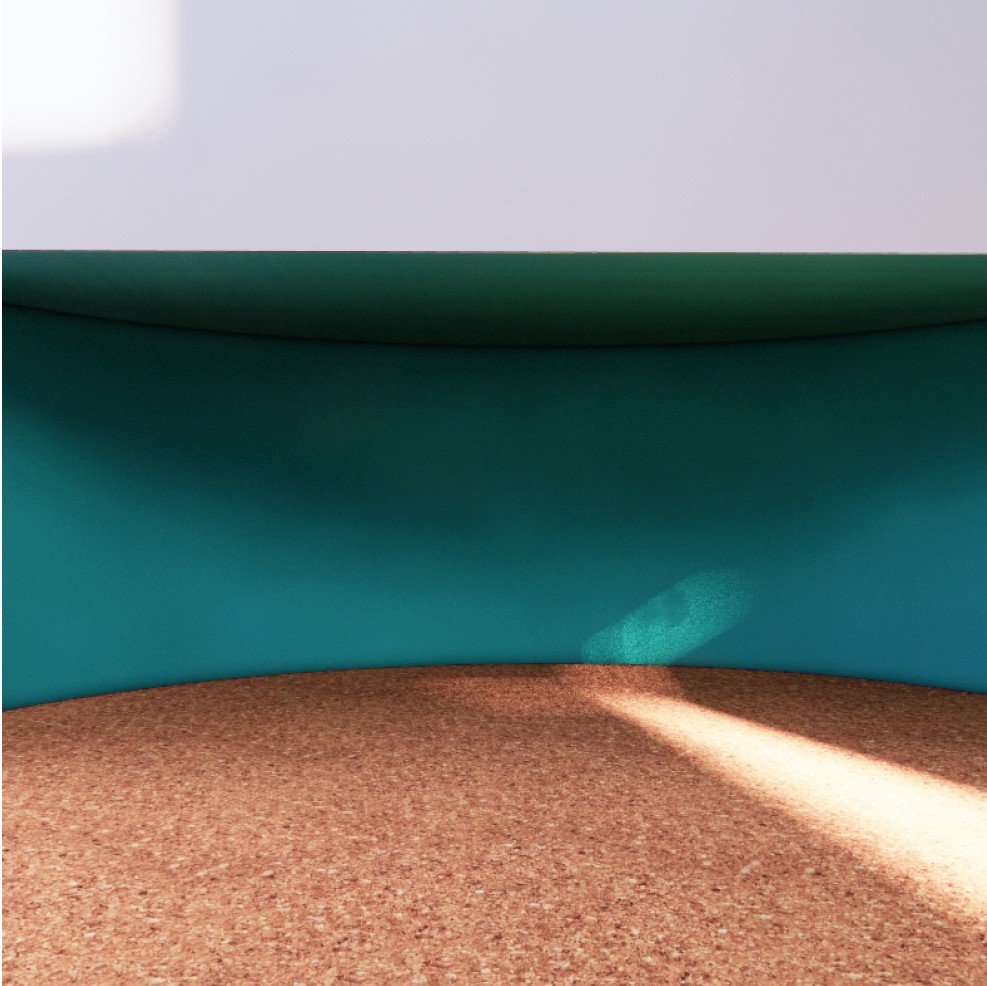
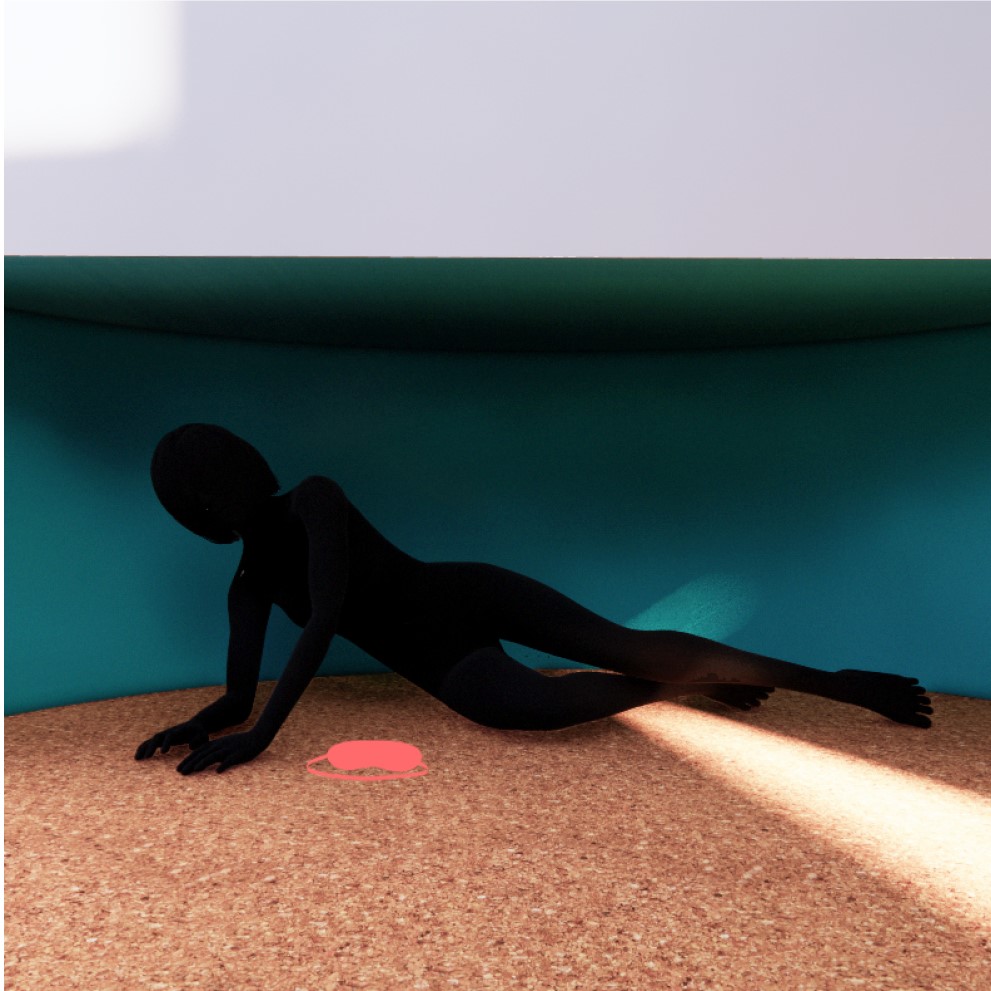
After eating lunch, Zoey enjoys a short nap to recharge both her mind and body before returning to her studio. The nook provides her with a darker space in the house and the cork flooring provides a comfortable surface for body. Zoey uses an eye mask to further block sunlight if she needs a longer nap. The nook is a shallow space with a curved wall, which embraces her body when she curls into a fetal position. Sometimes Peter joins for a short nap as well.
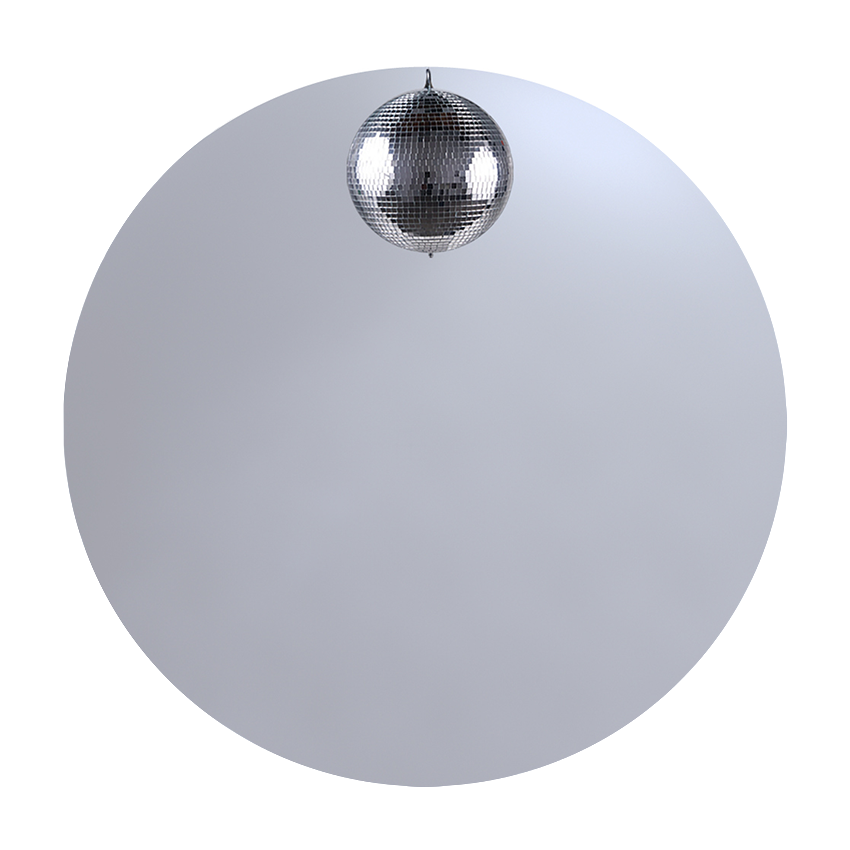

The disco ball hangs in the spherical discotheque. The walls are painted white and change color based on Zoey’s choice of lighting. She prefers white lights when she listens to ABBA’s ‘Dancing Queen’ and alternates between hues of purple and pink for ‘Mama Mia’. She knows all of ABBA’s songs by heart and appreciates that she can sing as loud as she wants. The light reflects on the sphere and creates an exhilarating atmosphere.


Zoey’s personal bubble is cube tiled in terrazzo, which creates a homogeneous space and puts her mind at ease. The bath is recessed into the floor and the toilet and sink are built into the space. Only the shower head, mirror and tap have a proud presence in black chrome. Zoey enjoys a warm bath at the end of the day. She enjoys feeling her pores open with the steam as she sips a cold glass of champagne. Zoey believes treating herself to personal time is rewarding in cleansing her mind from external pressures she feels in the city. Her house is a refuge.


The hearth is a hexagonal prism where Zoey can cuddle her rabbit Peter each evening before bed. The various facets of the prism also allow each visitor to occupy a wall. There is no need for furniture since the cork flooring and walls are comfortable surfaces to lean into. After bathing, Zoey feeds the fire with logs and is charmed by the flames as her wet hair dries with the heat in the room. Peter makes himself comfortable by her side. Sometimes Zoey roasts smores with friends and they talk until dawn. She feels content in this space.
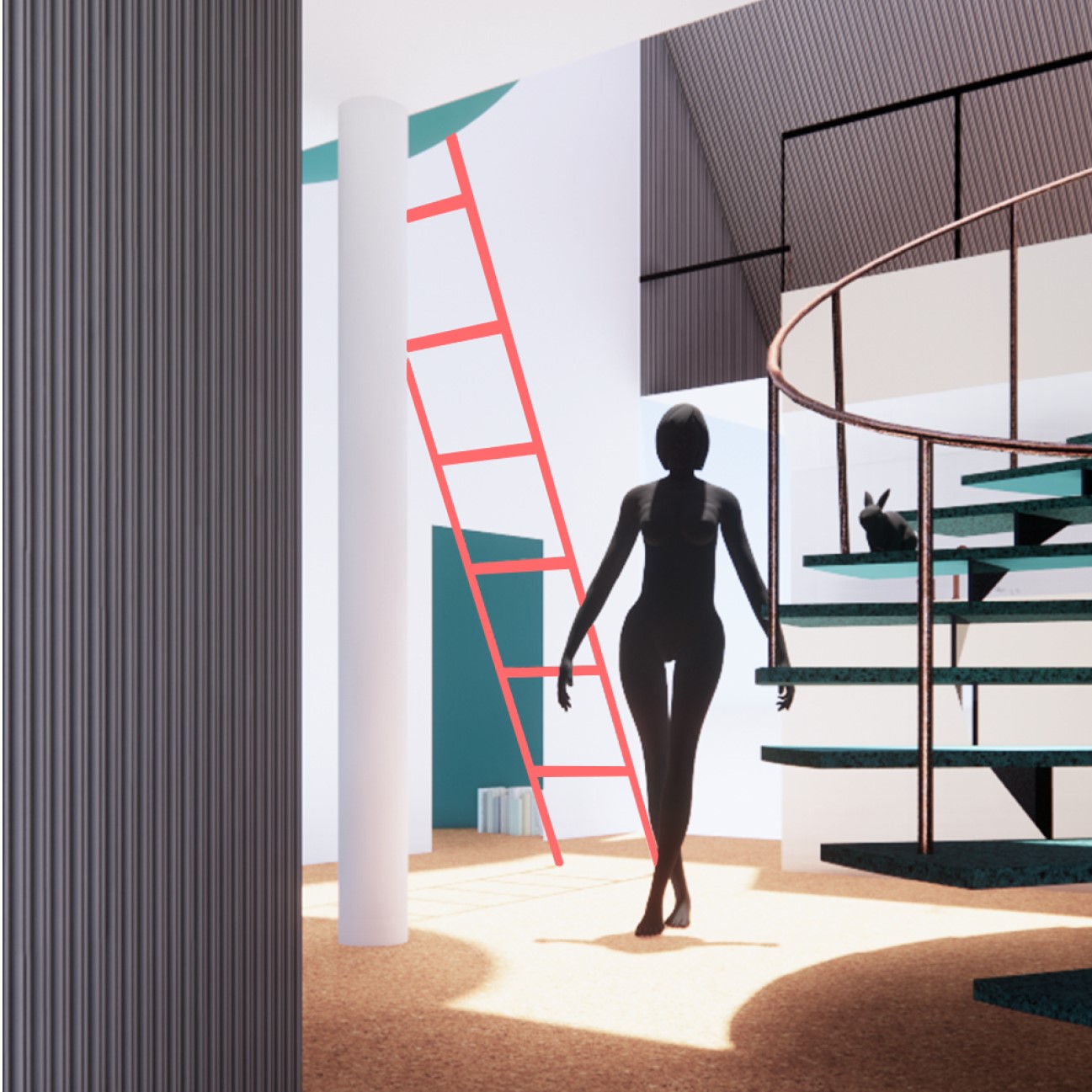

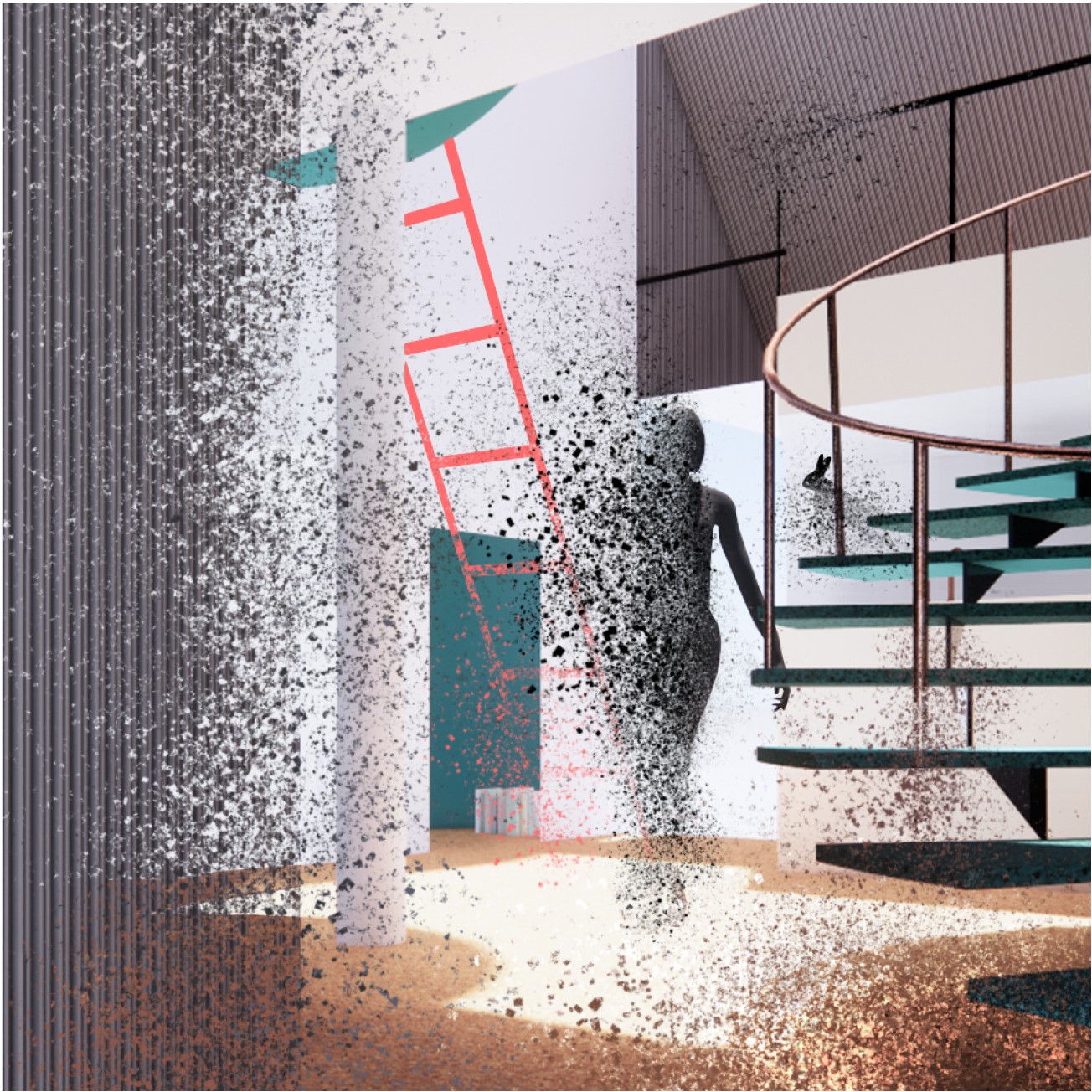
“Houses live and die.” – Koji Taki


